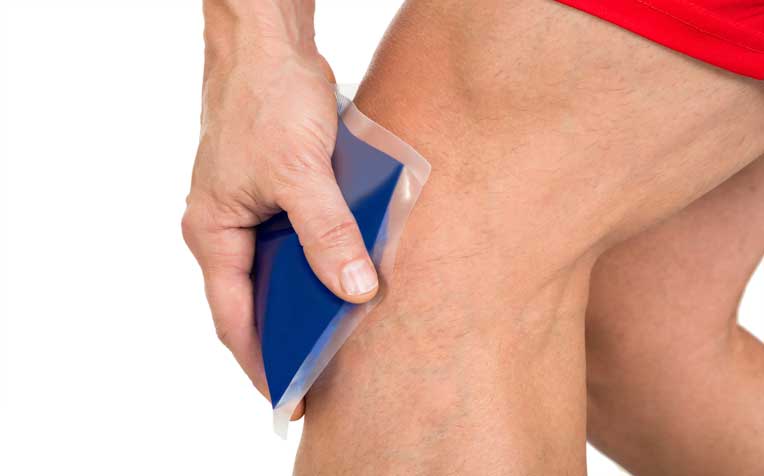
Alleviate knee pain by applying ice pack to the area for a few minutes.
Treatment for runner’s knee
Associate Professor Paul Chang Chee Cheng, Senior Consultant and Director, Orthopaedic Sports Service, Department of Orthopaedic Surgery, Singapore General Hospital (SGH), a member of the SingHealth shares the types of treatment and prevention tips for runner’s knee.
When injured, you should always allow some time for recovery. However, it’s best to start correct exercises early before muscle weakness sets in.
The best way to treat runner’s knee is to take a short break from the activity that has been causing the pain. “Joggers who need to avoid putting weight on their knee can temporarily consider another sport like swimming or gym-training instead,” suggests A/P Chang. However, seeking professional advice on shoes, training regime and running technique is essential before going back to running.
If you have a swollen knee, applying ice packs to the area for a few minutes, every few hours, will help to alleviate the pain. Alternatively, use a knee guard to lend extra support or elevate your swollen knee with a pillow.
Your doctor might also prescribe anti-inflammatory painkillers such as nonsteroidal anti-inflammatory drugs (NSAIDs) to relieve the knee pain. Stretching and strengthening exercises may also help.
However, in severe cases, surgery to remove the damaged cartilage or to realign the kneecap may be useful, says A/P Chang.
How to prevent runner's knee from acting up in future
Even after you’ve healed, consider taking some preventive measures to stop runner’s knee from acting up in future.
Wear the right running shoes:
Be sure to do your research and buy a pair of running shoes that suit your feet. Don’t pick shoes solely based on aesthetics and branding; consider the cushioning (air, gel or wedge) and match it to your exercise needs. If you have flat feet, the solution may be as simple as getting custom-made arch supports.
Stretch, stretch, stretch:
Based on a UK study, doing stretching and strengthening exercises before training sessions can help to reduce the incidence of anterior knee pain (AKP) in recruits. So consider doing stretching and strengthening exercises to improve flexibility and prevent muscle tear.
Don’t be overzealous in your training routine:
Never increase your running mileage or switch terrains suddenly. A/Prof Chang explains: “Your body will need time to adapt to the longer distances or change in running terrain to prevent runner’s knee.”
Get professional advice
on your running style, technique and frequency and distance of runs.
Try other sports:
Cross-training (biking or swimming) will allow your knee and body to recover between long runs.
Cutting-edge medical technology – including minimally-invasive surgery – and the expertise of specialists make the Department of Orthopaedic Surgery at Singapore General Hospital (SGH), a member of the SingHealth group, a premier referral centre for spinal surgery, joint replacement and ankle and foot surgery, and the treatment of musculoskeletal tumours, trauma and sports-related injuries.
Ref: T12
Contributed by


















 Get it on Google Play
Get it on Google Play